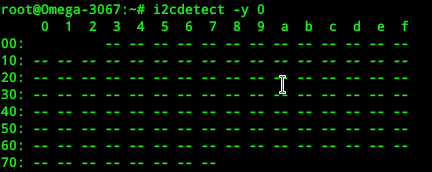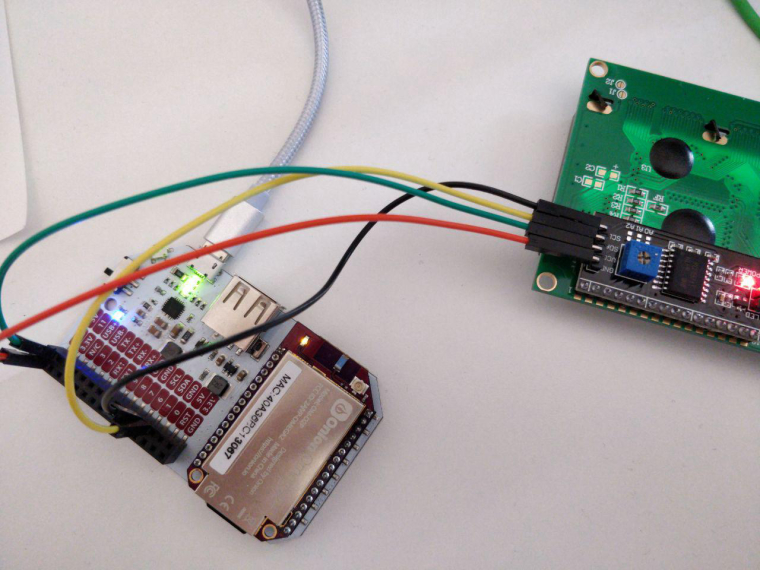Someone has worked with LCD 4x20 I2C Model 2004A ?
-
@Marcelo-Silva said in Someone has worked with LCD 4x20 I2C Model 2004A ?:
LCD 4x20 2004A
sorry, ignore that. I did it with GPIO not I2C. I could not get the I2C to work with the supplied libraries either.
-
I have the same display but i2cdetect cannot reconize it so I have no idea what to do next.
-
I was thinking that my display i2c (4/2 rows) were broken but after trying with arduino uno they works.
So I think that something is broken with omega, someone has suggestions?
-
@Daniele-Scasciafratte
What firmware are you using?
Firmware's b194, b200 and b201 all include various i2c related enhancements in case you are not using any of them.
-
This post is deleted!
-
I am using the 0.3.2 b221
This is the output:
This is the schema:

-
I opened a ticket in their system and also written to them on twitter https://twitter.com/OnionIoT/status/1126978121423572992 (they replied but no action after that).
So right now I have 2 Omega2+ unusable because there is no assistance and I have to buy other board because the display are not working...
-
@Daniele-Scasciafratte
Do you know if the LCD board has any strange requirements for I2C or otherwise, or if it's a purely 5V board?I ask because the Omega2 definitely supports all standard 3.3V I2C devices that run at speeds of 100 kbit/s and 400 kbit/s, and our Starter & Maker Kits come with an I2C-based LCD screen, that we know works for sure.
Have you tried powering the LCD screen with 3.3V?
-
I tried with 3.3 and 5v, I tried also the same screen with an arduino uno and there wasn't any issue (the sketch printed and recognized the screen at the default pin as should be).
I tried with another i2c screen that I have and not worked (I had the arduino starter kit that doesn't include the lcd screen).
-
With raspberry pi1 (the 2011 model) the screen are working but not with omega that not recognize them.
I will probably resell my omega and various accessories because the assistance is not very helpful